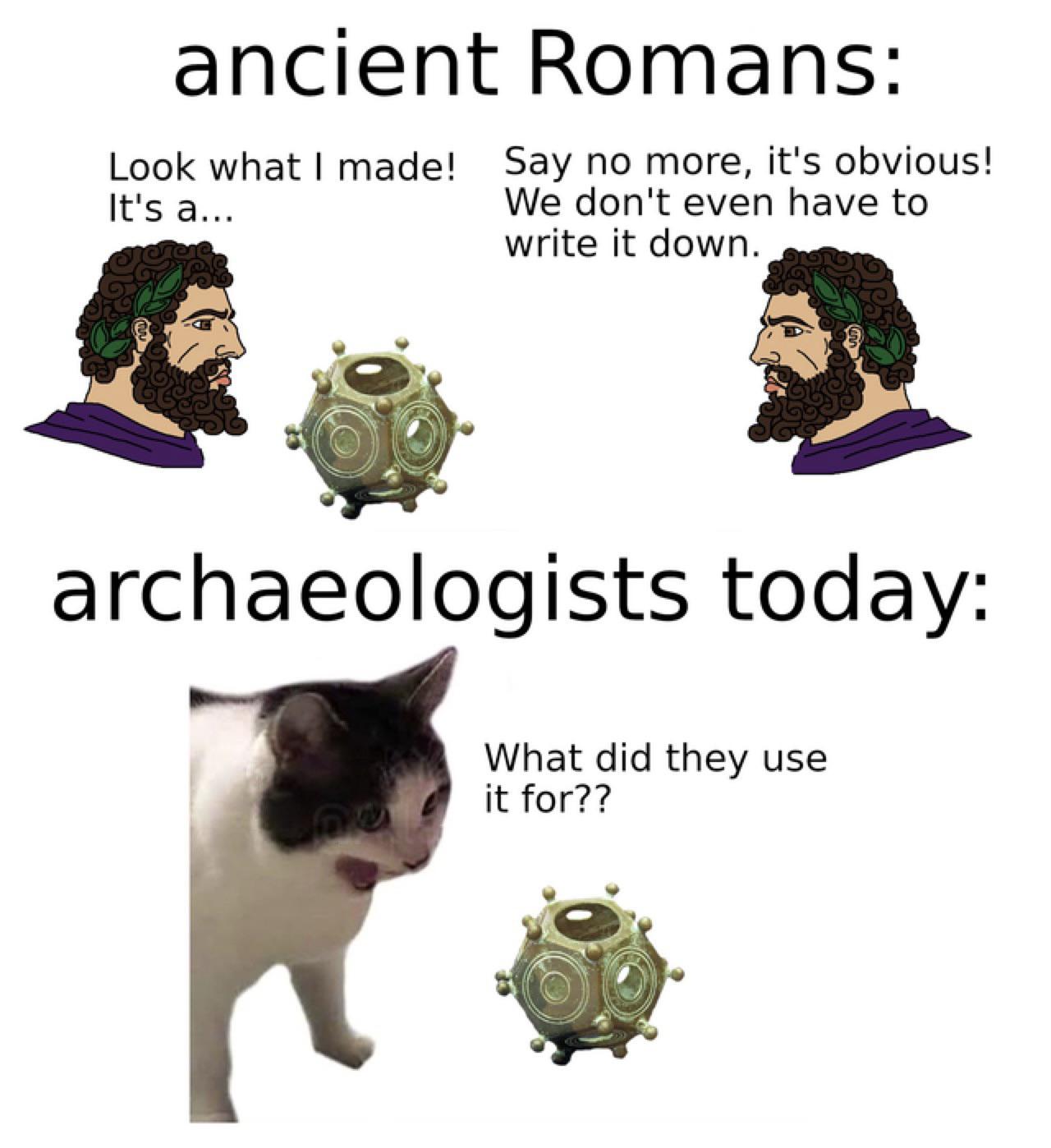"Everyone knows what a horse is"
-
Maybe they're just like the ancient equivalent of the fancy expensive gaudy crystal pieces you can get today.
God so many better ways to spend $1800
They probably just have no practical purpose.
-
If that's the case, it could have been a craftsman's magnum opus. A certification you prominently display to show your wares aren't forgeries.
-
Gloves. There's several YouTube videos of people knitting gloves with them. If you use 5 holes, you'll end up with a slight curve to one side for free. You can use the hole-sizes as a guide for finger width. Most of the work is done by the nubs sticking out, which hold the outermost stitch.
-
Are you asserting that an ornament can't be categorized as a religious artifact? Cuz if so, I (or you) have some explaining to do.
-
Seems pretty convincing and matches gold bracelets made in the era.
-
Gloves. There's several YouTube videos of people knitting gloves with them. If you use 5 holes, you'll end up with a slight curve to one side for free. You can use the hole-sizes as a guide for finger width. Most of the work is done by the nubs sticking out, which hold the outermost stitch.
Romans quite literally did not knit.
-
Knitting metal: https://youtu.be/lADTLozKm0I?si=pKQ8Dwt7wriapdni
-
Knitting metal: https://youtu.be/lADTLozKm0I?si=pKQ8Dwt7wriapdni
-
I remember reading a book as a kid, I can't remember if it was this or maybe inspired by this, but adapted for kids (iirc the art style was more cartoony and comedic) where archeologists unearth a motel called the Toot and C'mon.
This guy did a bunch of kids books. My favorites were Castle and Pyramid.
-
Seems pretty convincing and matches gold bracelets made in the era.
I've actually seen an old lady knit gloves with one as well.
-
Knitting metal: https://youtu.be/lADTLozKm0I?si=pKQ8Dwt7wriapdni
Also gloves: https://www.youtube.com/watch?v=76AvV601yJ0
-
The reason that knitting isn't the currently accepted answer, is that its pretty well understood that in the periods where these are found, Romans quite literally did not knit.
-
The reason that knitting isn't the currently accepted answer, is that its pretty well understood that in the periods where these are found, Romans quite literally did not knit.
First of all, Wikipedia is not a source. All of the sources on Wikipedia are annotated in the text and listed at the bottom of the page. All you have to do is look down, get the actual source, and use that. You couldn't be bothered to do the bare minimum to give an argument but still waste time throwing out links to non-sources?
Secondly, from your "source":
These complexities suggest that knitting is even older than the archeological record can prove.[3]
Earlier pieces having a knitted or crocheted appearance have been shown to be made with other techniques, such as Nålebinding, a technique of making fabric by creating multiple loops with a single needle and thread, much like sewing.[4] Some artefacts have a structure so similar to knitting, for example, 3rd-5th century CE Romano-Egyptian toe-socks, that it is thought the "Coptic stitch" of nalbinding is the forerunner to knitting.
-
I thought for sure it would be this video
-
Knitting is a medieval development that originated around Egypt in probably 1000-1100 CE (AD). There is no evidence of two needle knitting before then.
Romans used sprang, weaving and needlebinding techniques. They did not knit. Some needlebound artifacts can resemble knitting - particularly those in the Coptic stitch. They are still produced using the thumb and needle method of needlebinding and are structurally different.
The type of knitting that YouTube grandma did on the dodecahedron - spool knitting/French knitting - is an even later development - early modern period - 1400-1500s.
As a spool knitter, the dodecahedron makes very little sense. The spacing of the pegs - not the spacing of the holes - is what determines the size of the created tube. Every face of the dodecahedron would create the same size tube - which means you’ve just got extra random pointless shit digging into your hands. Google and compare to a modern spool knitter.
The idea of making a doohickey for fingered gloves, which you would then need to sew on anyway (every knitters least favorite thing to do) - it’s silly.
Here are some 4th/5th century socks - produced via needlebinding.
Here is the earliest known example of true knitting. 1000 at earliest.
You mentioned that not all socks would survive - that is true, but often textile patterns can be recovered through indentions in other material.


